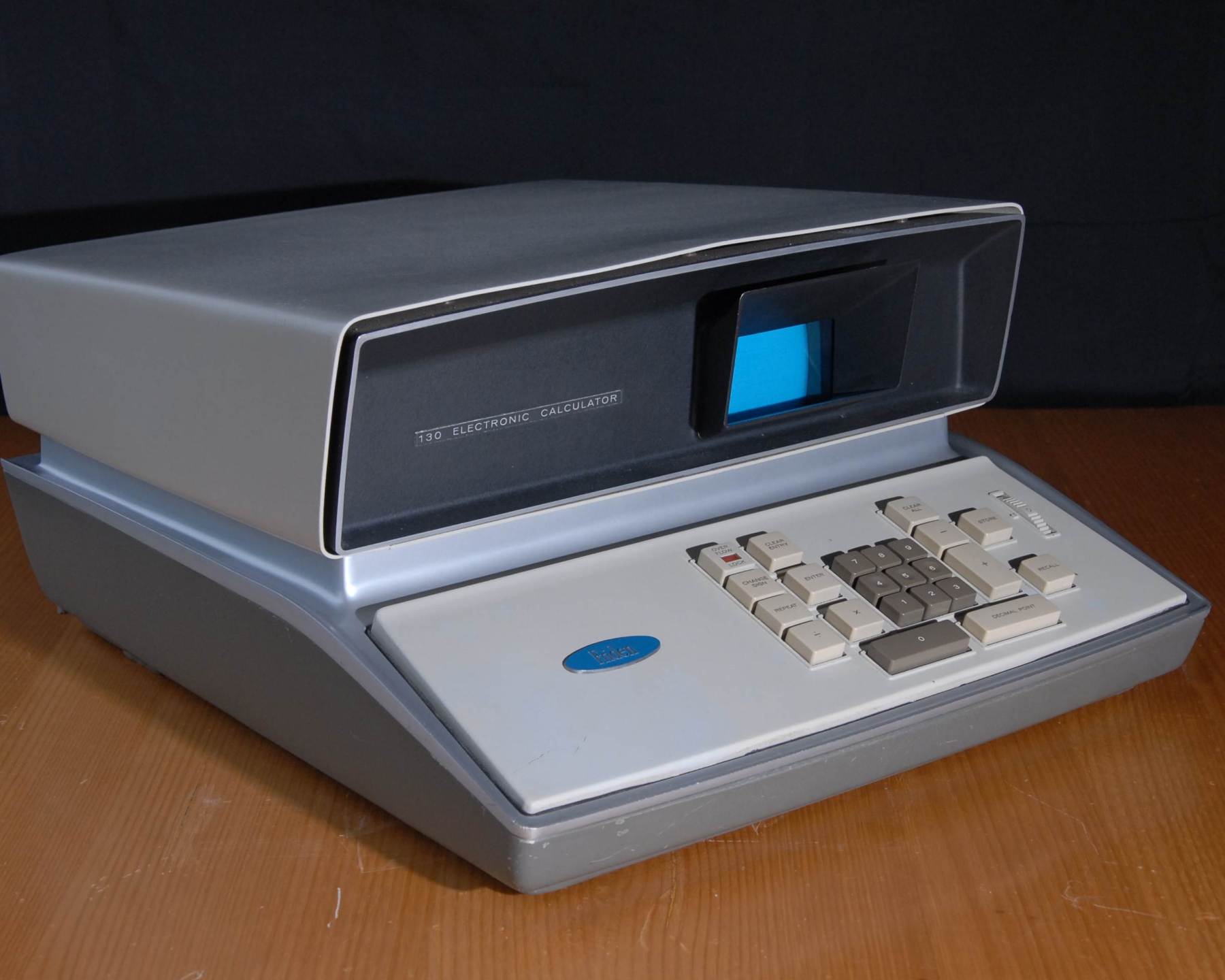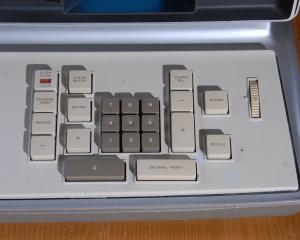Friden EC-130 Calculator
The Friden EC 130 is a marvellous machine. It arose from a special intersection of circumstances and is utterly a product of its time, born as electronic logic first flowered, and of its place, built by a company expert in mechanical construction and committed to craftsmanship. The EC 130 is an arresting first sight and it still appears modern, over fifty years from its debut. In use it says "quality" at every keypress, the keys going down with a silky swoosh against a gentle constant resistance. The key locks while the electronics do their work then there is a soft click and the key rises rapidly and smoothly ready for the next input. The keys on an EC 130 operate with the same feel as a luxury car door.
The special feel of the EC 130 keyboard cannot be denied and was actually based on business reasons that appeared sound at the time. In the mechanical calculator world skilled operators worked at very high rates without looking at the keyboard, similar to touch typists. The "feel" of the keyboard was very important to these operators and new models with the wrong feel would be received poorly. Friden had long experience in the calculator market and carried this concern for feel through to the EC 130. The EC 130 keyboard is an intricate piece of mechanism and is responsible for the special keyboard action. This attention to detail would have seemed reasonable to Friden but was not shared by people like Dr Wang who judged that once people appreciated the power and economy of electronic calculators they would forgive a harsh and clicky keyboard. Similarly, Friden no doubt found it easy and natural to design an intricate and beautiful case, while Dr Wang and others judged that a simple box would cover the internals until the customer saw what the calculator could actually do.
Operating the EC 130
The EC 130 uses Reverse Polish input, and was the first calculator to employ this method. The method takes a bit of time to learn but then provides the means to handle very complex calculations entirely within the calculator, without the need to record intermediate results. Use of Reverse Polish is assisted if the machine's calculation stack can be viewed and this is where the multi-line CRT display becomes very important. Aside from assisting with complex calculations Reverse Polish also simplifies many parts of the electronic logic, thus there are two reasons why Robert Ragen may have adopted this method.
Once Reverse Polish is understood, the EC 130 is very easy to operate. The decimal place is fixed and is selected on the thumbwheel. Digits are entered directly and Change Sign toggles sign as required. The four arithmetic functions operate on the bottom two numbers in the stack. Enter pushes the input number up the calculation stack and Repeat duplicates the bottom entry, pushing the stack up. Numbers pushed off the top of the stack are lost, without user notification. Store and Recall move a number in or out of a separate storage register.
Quirks and Errors
The EC 130 has a robust arithmetic implementation. Negative numbers and their combinations are handled correctly across all operations.
Overflow detection is robust, the overflow indicator lights and the keyboard locks until Clear is pressed. Underflow possible with the fixed decimal system and is silent, but should be obvious by the all-zero display
Division by zero causes an endless loop and Clear All must be pressed to terminate it.
The EC 130 is still perfectly usable today. It is fast and free from vices or errors. Reverse Polish with a fully-displayed 4-level stack makes it is quite powerful, as long as the four arithmetic functions are sufficient. It is also good to look at and pleasant to use. Continuing to use it regularly seems likely to be a very appropriate tribute to Robert Ragen and his team.



